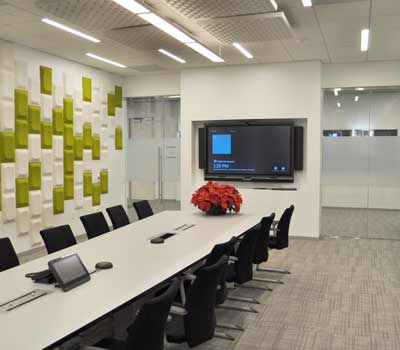Why are video conference systems a safe bet for the future?
 There is a clear role for video conferencing in most corporations – that of the virtual meeting. Those meetings can involve any kind of content, whether sales, marketing, project organization and progress, training or just relationship building. Modern video conference systems come with a slew of features that allow for crisp collaboration and brainstorming, as well as media sharing, which makes for better data organization.
But that’s all known at this point. What makes video conference systems a viable option going forward?
There is a clear role for video conferencing in most corporations – that of the virtual meeting. Those meetings can involve any kind of content, whether sales, marketing, project organization and progress, training or just relationship building. Modern video conference systems come with a slew of features that allow for crisp collaboration and brainstorming, as well as media sharing, which makes for better data organization.
But that’s all known at this point. What makes video conference systems a viable option going forward?
1. Young hires have handled high-quality video calls all their lives – Yes, again with the millennials, but don’t forget Generation Z. Gen Z is coming of age and will soon find its way into corporate offices everywhere, as they seem to be marked by their capacity for self-starting. Millennials were exposed to high-quality video calls around the time they hit their teenage years, and the Gen Z cohort has never known a time without them. What does this mean? It means that Millennials and Gen Z have accepted, completely, the idea of using video conferencing technology to keep in touch with people. But not only that – they are accustomed to the kind of crystal clear image quality that modern conferencing software brings to the table.
In short, companies can keep their younger employees talking to each other and humming along if they opt for video conference systems that emphasize quality audio and video. In fact, a survey funded by Cisco found that nearly 90 percent of young professionals would prefer to work for a company that invests in video conferencing technology. A veteran of 30 or 40 years may not be enthusiastic about video conferencing, but two generations’ worth of bright minds are, and it’s up to companies to lure those people in.
2. The modern career is not geographically locked – This is a truism that extends all the way to the initial job search. Ambitious college graduates know that they have to be open minded about where they start their career, and more than ever, they look all over the country, and even the world in some cases. It would obviously be infeasible for these budding professionals to attend in-person interviews all over the U.S., so the only real solution is a face to face video call. This, again, is something that young people want, as a survey by PGI (a well-known collaboration solutions provider) found that 2/3 of its young respondents preferred video interviews over traveling to meet an employer. A company that neglects video conferencing solutions, then, is blocking off access to some of the best candidates available.
And this is just the beginning. Video conference systems effectively shrink the world for a company, and especially a company that is engaged in multi-national initiatives. This trend will only grow as more and more countries join the rest of the world as first world nations.
3. Video conferencing systems will improve as other A/V solutions improve – Some A/V technologies just haven’t, and won’t, stand the test of time. That’s normal, it happens. But video conferencing systems appear to be one of those bedrock solutions that will only get better as new innovations are added to the pile.
For example, take virtual reality. Virtual reality has made enormous strides in just the last five years, with several powerful investors and engineering firms, like Facebook, Amazon, Google, Sony, HTC and Valve, racing to create the optimal form of the technology. Unsurprisingly, virtual reality has captured the imagination, especially among young people who have grown up with a natural fondness for technology. There are already efforts being made to integrate virtual reality technology with video conferencing systems. One example of this may include all of a meeting’s participants joining a conference by putting on a virtual reality headset. Inside the meeting, they see a virtual representation of everyone in the meeting, so people can truly talk to each other while maintaining eye contact instead of looking into a camera.
This is just one example, but it underscores the creative ways that video conferencing solutions can branch off in the future. By bringing in the solutions now, a company can save money and time in scaling up their own collaboration solutions as technology permits.
In the here and now, the benefits of the technology are obvious. Things like:- Organizing larger meetings and encouraging better participation.
- Reducing travel costs and risks for employees.
- Keeping meetings short, sweet and to the point.
- Executing meetings in immediate response to changing market conditions or news.
- Better engaging meeting members and ensuring information recall.
- More natural conversations that lead to improved cooperation between parties.
- Bringing in outside experts for training purposes.



